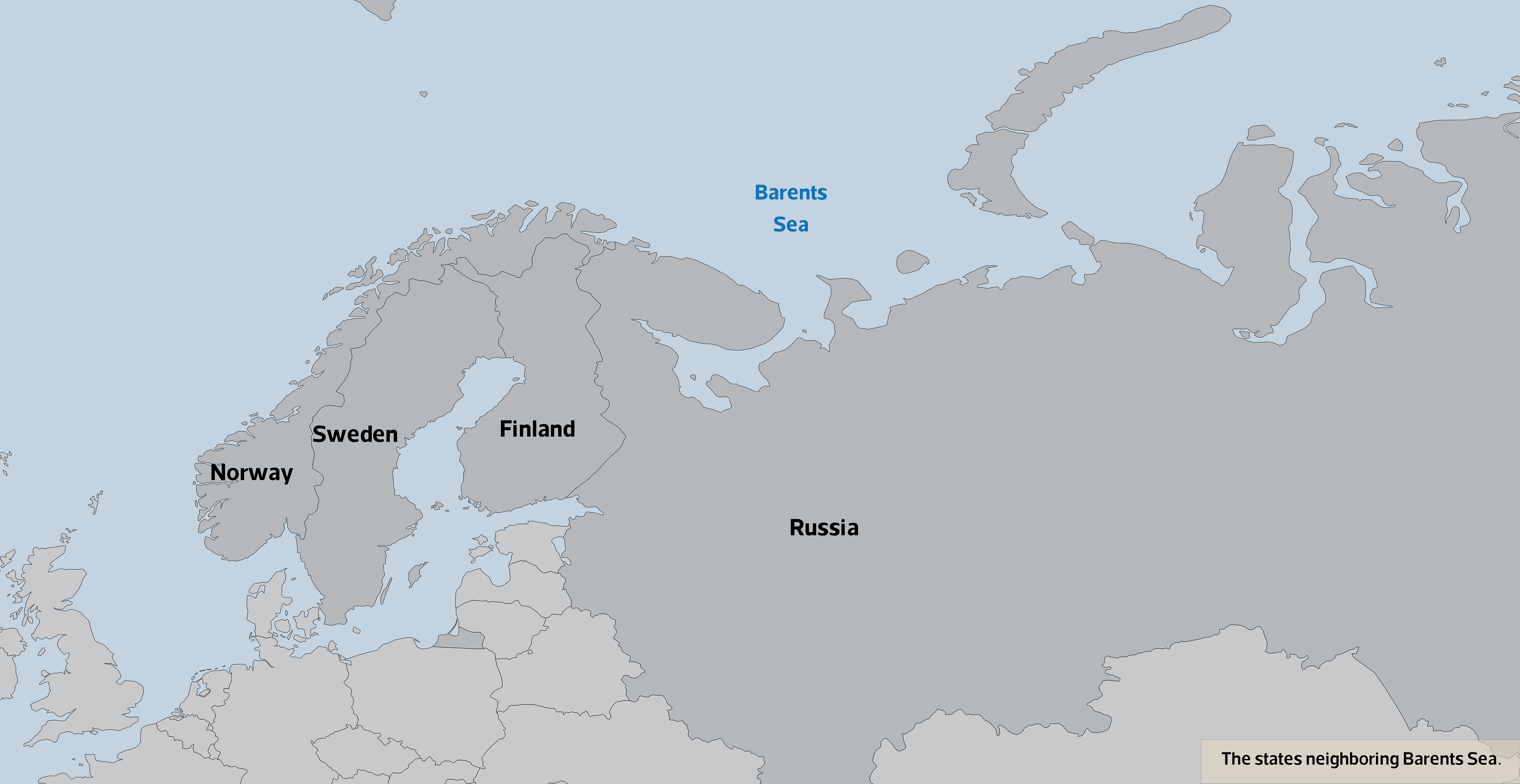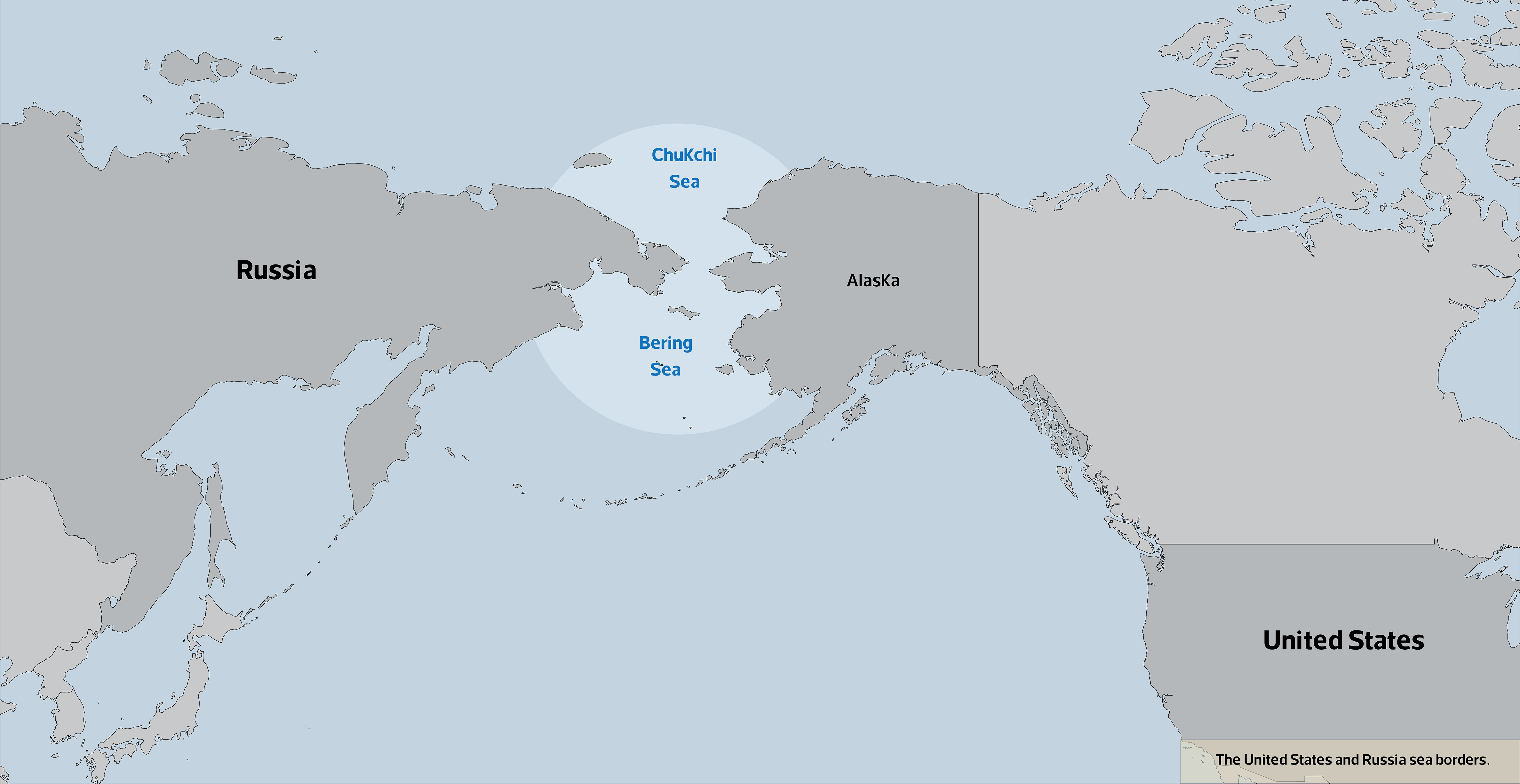Geopolitical Crisis in the Artic: Effects on the International Security System
Strategic Summary | This summary addresses the importance of the Arctic in influencing the international system decades after being marginal and of limited influence. This importance is discussed in the context of strategic updates and the major military reinforcements made by the countries neighboring the North Pole, indicating that such region would enter into the epicenter of international conflict.
by Anas Al Qasas
- Release Date – Aug 21, 2022

The crisis that occurred at the end of June 2022 between Russia and Norway over the strategic Svalbard, the strategic Norwegian archipelago in the Northern Norwegian Sea, sparked many questions about the re-emergence of the importance of the Arctic in influencing the international system, decades after such region was marginalized and had a limited influence.
In the same context, the North American Aerospace Defense Command (NORAD) announced major upgrades to its air defense to counter Russian hypersonic missiles and prepare against the possibility that a nuclear bombing might take place on the United States and Canada.
This coincided with the decision to activate the 11th Airborne Division of 12,000 troops in Alaska nearly seven decades after World War II. This is in addition to increasing the number of air sovereignty fighters and redeploying mechanized infantry battalions (Stryker and Bradley) within the framework of extensive improvements to the Arctic strategy announced by the US Army in 2021 to keep pace with developments of the ongoing state of war in Europe and the escalating tensions with China. All this is in addition to other military, security, and political developments that indicate the Arctic has entered the epicenter of international conflict.
The Svalbard Archipelago Crisis and Its Strategic Dimensions
The escalation of the crisis between Russia and the West drew attention to the Achilles heel in the security, social, and economic system of Western countries: the Svalbard archipelago of Norway located north of the Norwegian Sea in the area between the Barents Sea and the Greenland Sea.
Since the beginning of the Cold War, this archipelago of islands has caused a major crisis for NATO because of the controversial 1920 Treaty of Svalbard that regulates the demilitarization of the archipelago and gives the treaty signatories, including Russia, sovereign rights to engage in commercial activities in the Svalbard Islands, including scientific and environmental research, exploration, mining, and fishing. The treaty does not allow NATO or Norway to deploy even light forces in the archipelago.
Moscow’s strategic position in this region, in a way that is much better than NATO’s overall position in the Barents Sea, is added to the impact of the crisis on NATO, because the Russian Navy’s Northern Fleet is positioned closer to the archipelago, where the fleet’s headquarters is situated at the Polyarny Naval Base overlooking the Murmansk port in the Barents Sea, which is Moscow’s strongest naval fleet to date. Russian naval submarines are cruising all the time in the Barents Sea and the Kara Sea, where the presence of the U.S. navy is weak. NATO navies are better located in the Norwegian Sea, around NATO bases in Norway, Iceland, and Greenland.

The presence of Russian naval forces in the North Seas was also increased in the northern seas, as some parts of the Baltic Fleet joined the Northern Fleet, this came after NATO agreed on admitting Sweden and Finland to it, the matter that made it difficult for the Baltic Fleet task, which started a redeployment weeks ago in response to the Murmansk axis plan, approved by Putin, and entrusted to Nikolai Patrushev, secretary of the Russian Security Council close to Putin, due to the extreme importance of this step in the Russian strategy to lift the blockade.
What makes NATO’s mission in this strategic direction be difficult is that some countries took advantage of the loose framework of the 1920 treaty, to be present in the islands of the archipelago. The most significant state of which is China: it has a mission to the Polar Research Institute in Ny-Ålesund and established a research station there, whose mission is questionable by U.S. intelligence, due to the large expansions during the past period. All these security and military new events had deepened the Svalbard crisis, especially with the weakening of the U.S. military deployment east of Grieenland, for matters related to the U.S. naval redeployment after the Ukraine war, especially the deployment of submarines, and the modifications that occurred to the aspect of their deployment in the U.S. Navy operations plan in 2022.
Redeployment In Iceland to Halt Northern Fleet Expansion
Iceland is one of the most important logistics hubs and strategic points of focus in Europe, the Atlantic, and the world. Iceland’s location in the middle of the southern Barents Sea, the Greenland Sea, and the northern Norwegian Sea. This location made Iceland be an important platform to control the movement towards the North Atlantic Arctic.
Taking into account all these considerations, Iceland is considered a critical point and a very weak flank in the NATO system, due to the Iceland’s lack of a regular army, while the strategic importance of Iceland is growing as a major global hub for transportation and services, especially data storage centers, the matter that made the NATO and the U.S. military to be present for longer periods there. The U.S. forces remained at their bases in Iceland throughout the Cold War, where they played an important role in reducing the Russian naval presence in the North Atlantic region. Nevertheless, most of the U.S. forces departed Iceland in 2006, as the polar rivalry between the NATO and Russia calmed down, as Russia was still preoccupied with what is more important than the Arctic rivalry at the time, especially with the expansion of the role of the Arctic Council, which was an important platform for resolving conflicts.
However, with the importance of the Arctic emerged again as one of the axes of Russian naval doctrine in 2015, and with the intensity of Russian naval movements in the North Sea and opposite to the Danish straits, explicitly threatening important NATO countries such as Britain, Denmark, as well as the entire area of the NATO in the eastern and northern Atlantic, the United States redeployed troops to Iceland. Such redeployment included reopening of the U.S. Naval Air Station Keflavik, which hosts long-range P-3 Orion and P-8 Poseidon aircraft famous for its massive capabilities of hunting submarine, in addition to more than 25 different commands of various sizes and personnel from the U.S. Navy, Air Force, Marines and Army in Iceland.
The significance of Iceland as an important hub for NATO, U.S. deployment in the Arctic region, and the control of the North Atlantic axis, is underlined by Russia’s heavy reliance on its Northern Fleet forces to provide the required supplies in the Black Sea, which the media reports reveal from time to time amidst the ongoing war in Ukraine. In July 2022, Ukraine conducted a special operation in its Kharkiv region that identified and neutralized a sabotage-reconnaissance group of Marines Corps of Russia’s Northern Fleet. The presence of Russian naval sabotage-reconnaissance forces was revealed by British intelligence in May 2022. This incident may indicate the likelihood of an increase in U.S. and NATO forces in Iceland to limit the Northern Fleet’s deployments in the Atlantic Ocean and seas controlled by the alliance. The ambassador of Iceland to the United States, Bergdís Ellertsdóttir, has made comments suggesting this possibility.
U.S. Army Redeploys its Forces to Alaska
Alaska is one of the most important polar hotspots that witnessed a wide redeployment during the last period with the outbreak of the Russian-Ukrainian war. One of the facts that is usually absent when attempting to understand the U.S. relations with Russia is that the United States shares 3,200 km close to 2,000 miles of waters with Russia in the Bering Sea and the Chukchi Sea.

Therefore, with the developments of the Ukrainian war, the United States carried out a massive redeployment of U.S. Army, Air Force, Air and Space Defense forces in Alaska. But among the most significant of these deployments is the announcement of returning the U.S. 11th Airborne Division to Alaska—news that is crucial in essence and indications. This division consists of 12,000 soldiers; a large number in special task battalions, in addition to the fact that this battalion is usually active in times of major crisis, having recorded prominent activity in World War II and the Korean War.
The deployment comes in parallel with the redeployment of mechanized infantry battalions, mounted on Stryker armored vehicles, behind the coastal defense lines stacked across the Bering and Chukchi seas. In addition, the U.S. Air Force increased the readiness of the 477th Combat Group (F-22-Raptor) in Alaska, and increased the number of its aircraft, as the United States announced holding the Polar Force exercise in April 2022.
Restructuring of NORAD’s Air Defenses
Along with all these significant developments that followed opening the conflict wide between the West and Russia, the North American Air and Space Defense Command (NORAD) decided to restructure its defenses, especially the space warning systems and air sovereignty system.
In July 2022, following successful hypersonic missile tests by Moscow, Canada decided to allocate $4.9 billion to improve the defenses of NORAD, where many gaps in its defense systems were discovered, especially against hypersonic missiles and cruise missiles, according to important statements made by Gen. Glen VanHerck, commander of the North American Aerospace Defense Command (NORAD), during the Aspen Security Forum held the same month. For his part, VanHerck believes that this eminent Russian challenge will be doubled in the coming period, given the development of the Russian missile industry as well as China’s steady development in this field. Therefore, NORAD’s leadership should be fully prepared, especially as the risk of nuclear bombing rises more than ever.
The Circumstances of These Developments on The International Security System
With the confrontation front with Russia becoming wider, in the wake of the Ukrainian war, the importance of the American strategy for offshore balance is highlighted, as the United States is currently reopening old bases in the Arctic countries, especially Iceland, the matter that is considered an Achilles heel for NATO’s security strategy in the Arctic, whose burdens to shoulder and consequences to face are deepened by Russian claims of having historical rights in Svalbard, which Russia surrounds from all sides.
So, given limited resources, the renewed conflict in the Arctic, which is now on top of U.S. national security, the United States will undertake a redeployment plan for some strategic forces in some parts of the world. In this case, some troops will be withdrawn from the lower-priority regions in favor of the Arctic, the western and southern Pacific, and Eastern Europe. This will be revealed in both the new national strategy and national security strategy, that will be announced soon.
* The opinions expressed in this study are those of the author. Strategiecs shall bear no responsibility for the views and/or opinion of its author on security, economic, social, and other issues, as they do not necessarily represent the views of the Think Tank.

Anas Al Qasas
Expert on strategic and international affairs, war and peace issues
 العربية
العربية